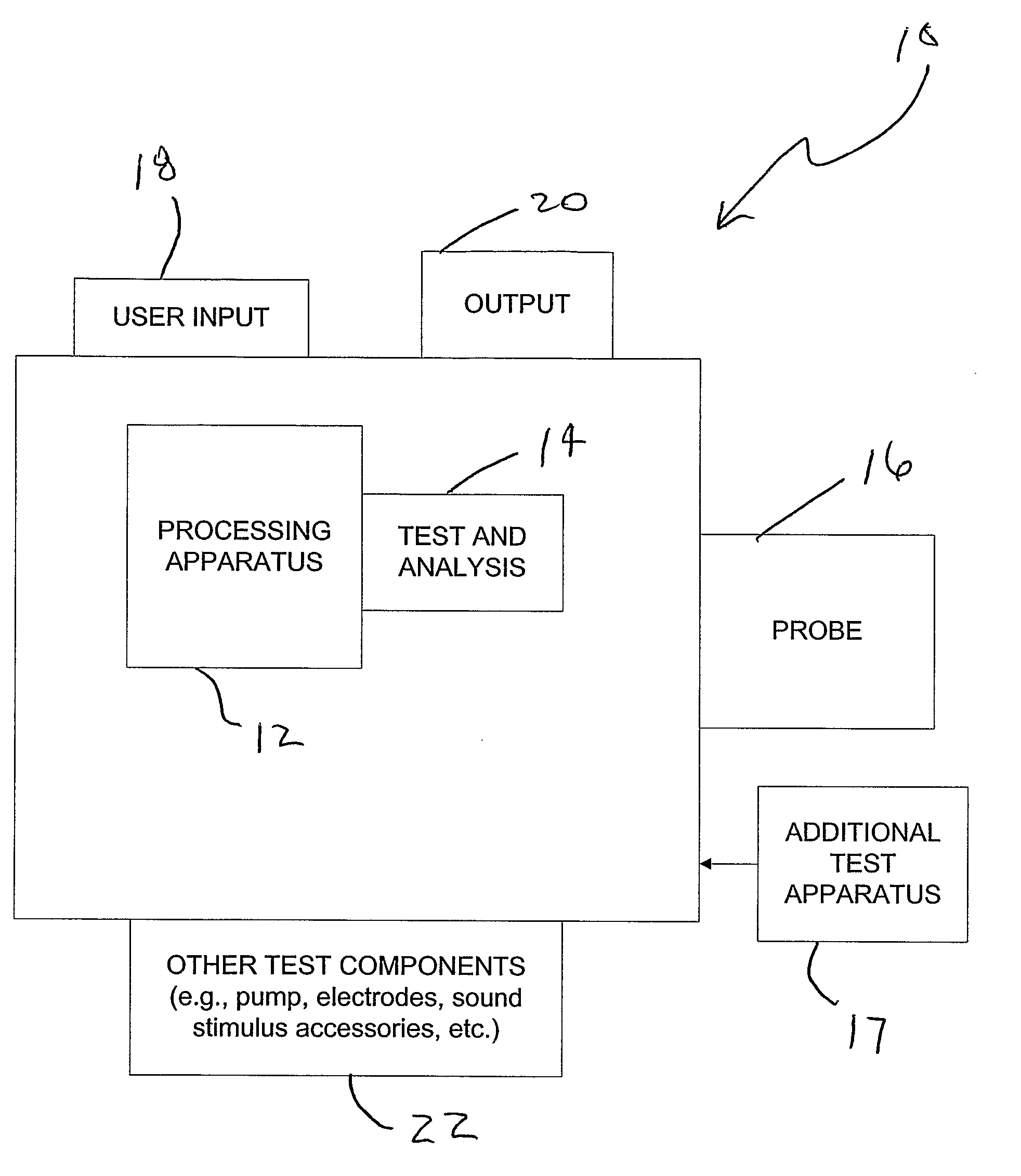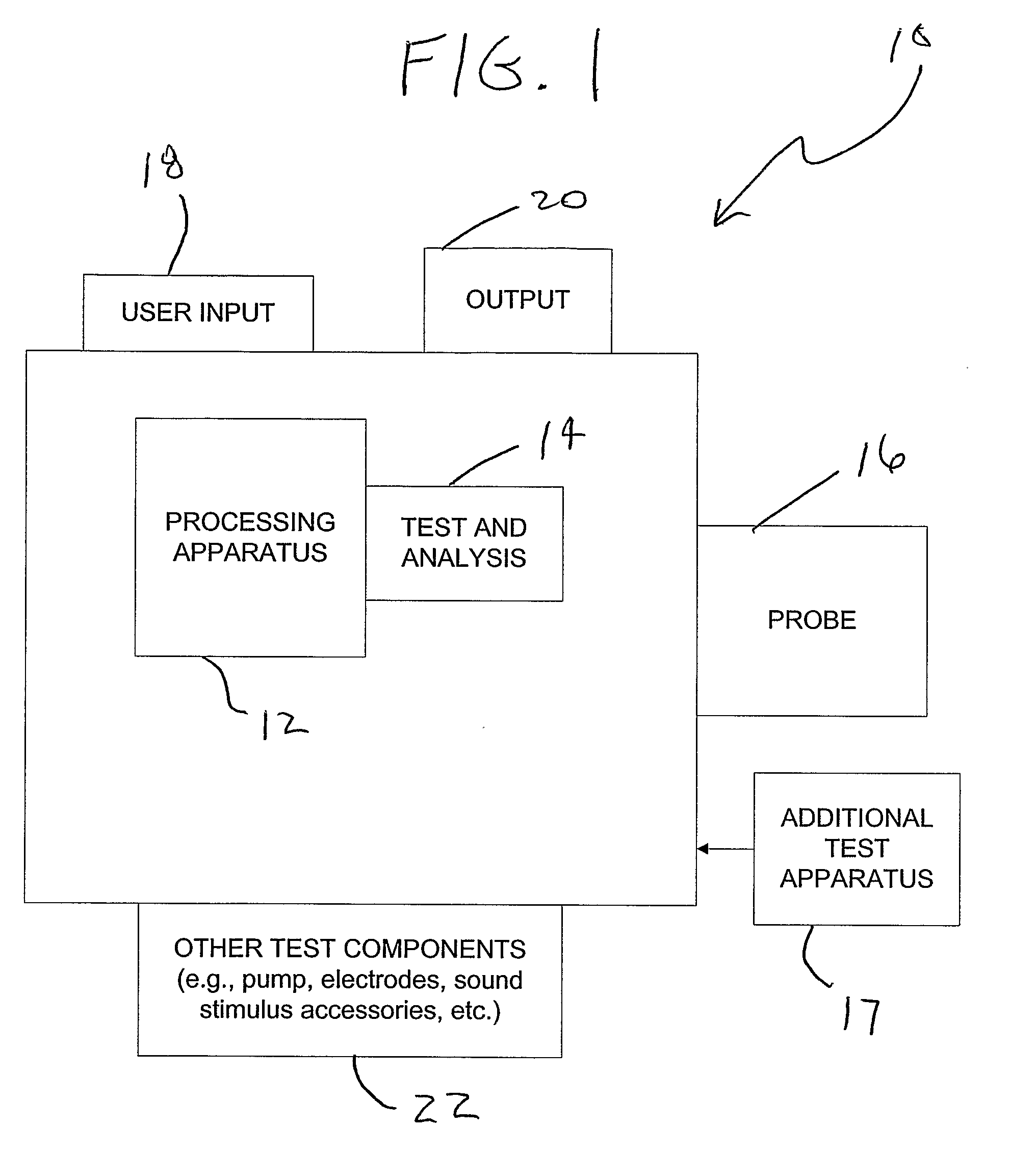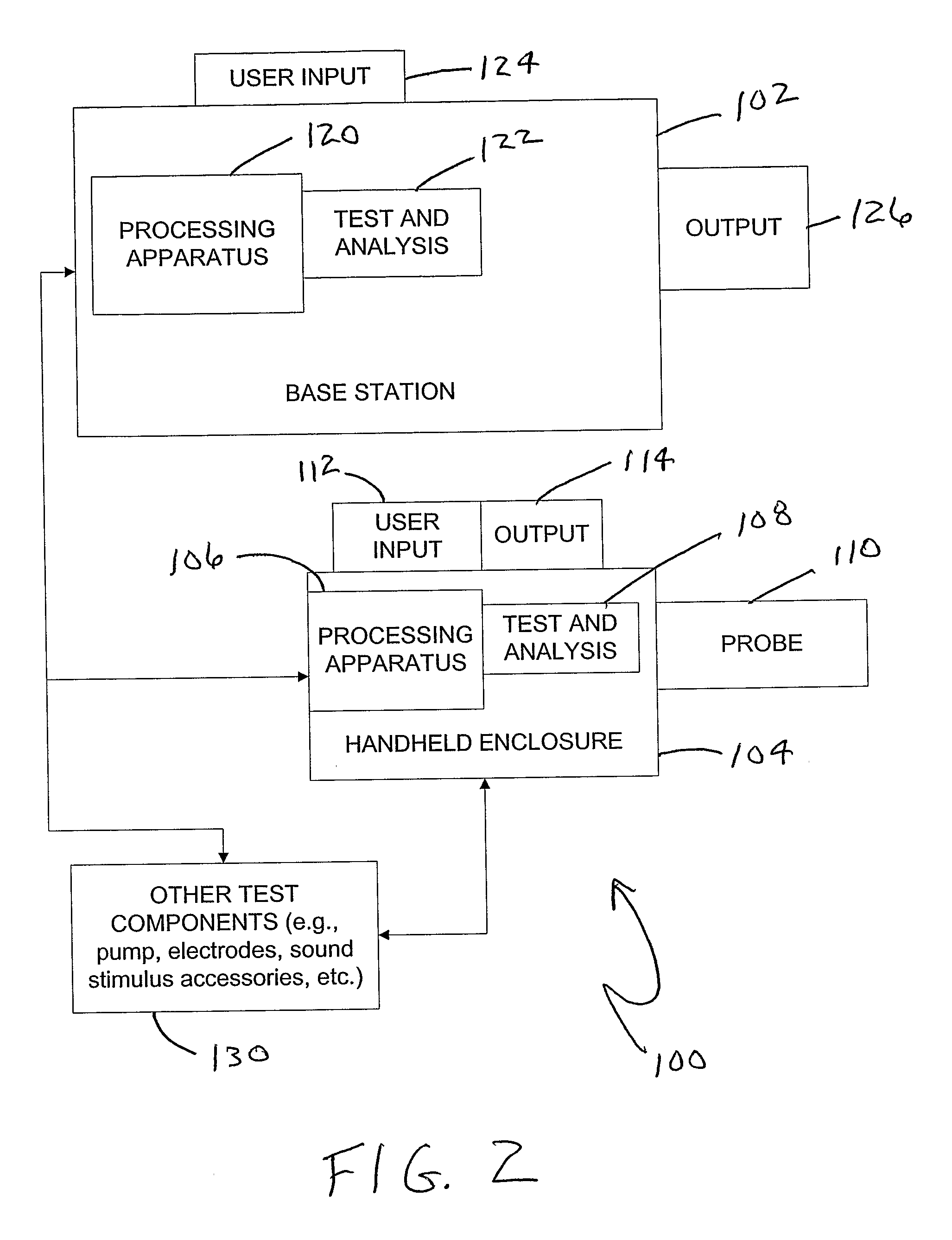Test Battery System and Method for Assessment of Auditory Function
- Summary
- Abstract
- Description
- Claims
- Application Information
AI Technical Summary
Benefits of technology
Problems solved by technology
Method used
Image
Examples
Embodiment Construction
[0117]Generally, exemplary embodiments of an auditory test battery system 10 and test battery method 50, according to the present invention, shall be described with reference to FIGS. 1 and 6, respectively. Various illustrative embodiments of such systems and methods, including reflectance tympanometry methods and systems (e.g., those that include feedback control) that may be used alone or in combination with such test battery systems and methods, shall thereafter be further described with reference to FIGS. 2-5 and 7-11.
[0118]One skilled in the art will recognize from the description herein that various illustrative embodiments described herein include some features or elements included in other illustrative embodiments and / or exclude other features or elements. However, a test battery system or method, according to the present invention, may include any combination of features or elements selected from one or more of the various embodiments as described herein with reference to F...
PUM
 Login to View More
Login to View More Abstract
Description
Claims
Application Information
 Login to View More
Login to View More - R&D
- Intellectual Property
- Life Sciences
- Materials
- Tech Scout
- Unparalleled Data Quality
- Higher Quality Content
- 60% Fewer Hallucinations
Browse by: Latest US Patents, China's latest patents, Technical Efficacy Thesaurus, Application Domain, Technology Topic, Popular Technical Reports.
© 2025 PatSnap. All rights reserved.Legal|Privacy policy|Modern Slavery Act Transparency Statement|Sitemap|About US| Contact US: help@patsnap.com



